gprMax: Electromagnetic simulation software (original) (raw)
News
Google Summer of Code 202427-Feb-2024

We are delighted that gprMax has been selected to partipate in the Google Summer of Code (GSoC) programme for 2024, having successfully particated in 2019, 2021, and 2023. We are 1 of 56 orgs worldwide in the science and medicine category.
We hosted an online project briefing session on Friday 1st March, 0930-1030 GMT. In the session we talked about gprMax and the codebase, as well as gave a more detailed description of each of the projects. We think this will be helpful to applicants both in selecting a project and shaping their application. You can watch a recording of the session on our YouTube channel.
GPR2024 conference24-Jan-2024
The 20th International Conference on Ground Penetrating Radar (GPR2024) will take place between 23-27 June 2024 hosted by Jilin University, Changchun, China. The conference will showcase the latest GPR research and technology as well as its wide range of applications.
We will be giving a pre-conference workshop on 23 June 2024 with sessions on the underpinning theory and finite-difference time-domain (FDTD) method, as well as hands-on demonstration and examples using gprMax.
Next version of gprMax - beta testing18-Jul-2023

We are almost ready to release the next version of gprMax (v4) code named Carn Mor, continuing our single malt Scotch whisky theming! Carn Mor has a number of new and exciting features such as:
- Sub-gridding - the ability to define different spatial resolutions in different areas of the main grid. This allows high-dielectric materials and fine geometries to be more efficiently modelled.
- OpenCL support - run your simulations more quickly on hardware (CPU and GPU) that supports OpenCL.
- STLtoVoxel toolbox - convert STL files and import complex geometries without having to build them from geometry commands.
- DebyeFit toolbox - simulate materials with dispersive properties described by relaxation models such as Havriliak-Negami, Jonscher, Complex Refractive Index Mixing (CRIM), or your own measured data.
- Landmine toolbox - contains realistic models of anti-personnel (AP) landmines including the PMA-1, PMN, and TS-50.
There are many more new features and also lots of under-the-hood improvements. We are seeking current gprMax users to beta test this new version which is available through the devel branch on our GitHub repository. Please report bugs through our GitHub issue tracker and use the tag v4 bug.
Google Summer of Code 202308-Mar-2023

We are delighted that gprMax has been selected to partipate in the Google Summer of Code (GSoC) programme for 2023, having successfully particated in 2019 and 2021. We are 1 of 42 orgs worldwide in the science and medicine category.
We hosted an online project briefing session on Friday 17th March, 0930-1030 GMT. In the session we talked about gprMax and the codebase, as well as gave a more detailed description of each of the projects. We think this will be helpful to applicants both in selecting a project and shaping their application. You can watch a recording of the session on our YouTube channel.
gprMax prize winners at IWAGPR202121-Feb-2022
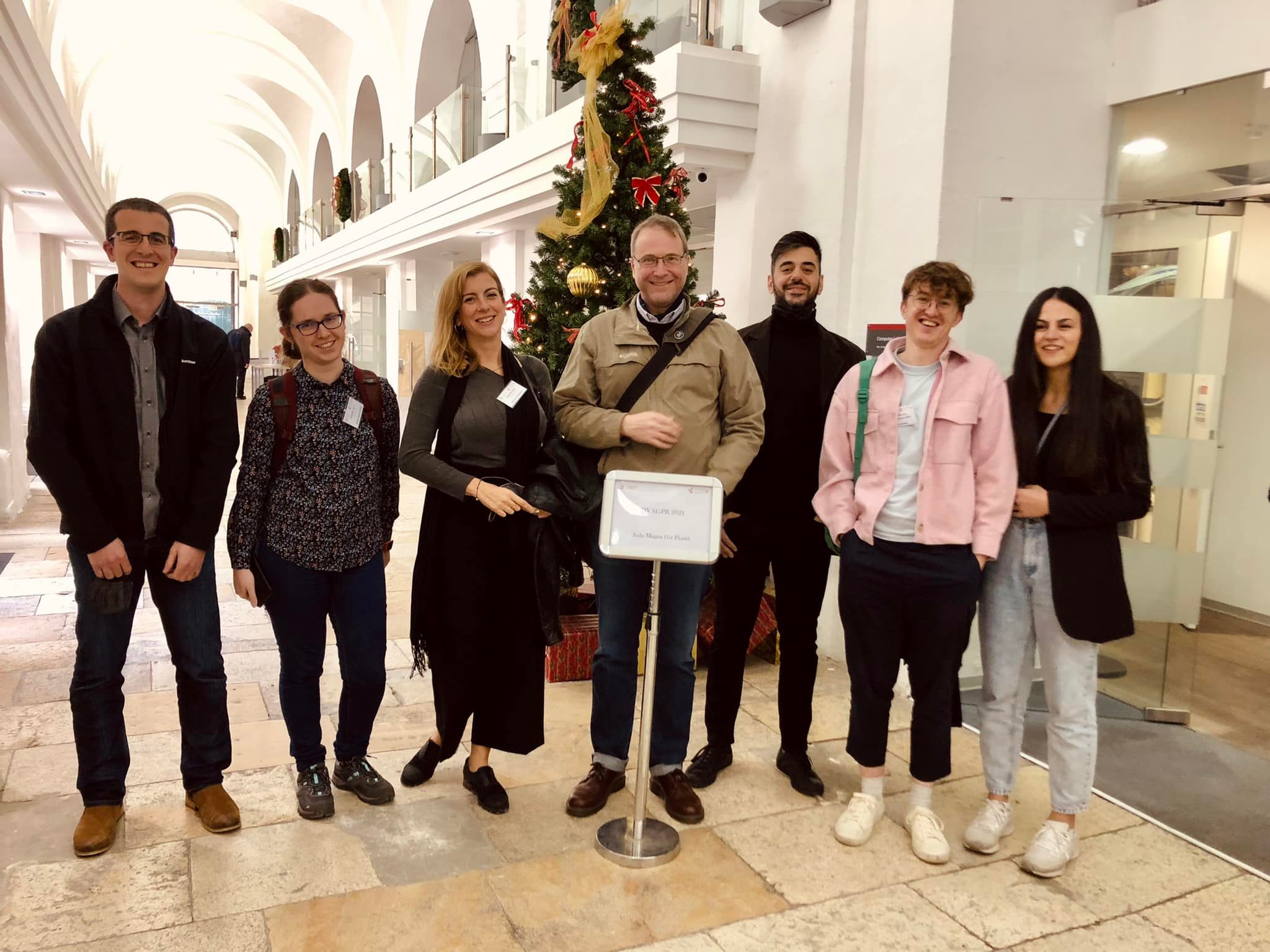
Rania Patsia (far right) & Sylwia Majchrowska (2nd from left) won prizes at IWAGPR2021.
Two members of the gprMax team won prizes at the 11th International Workshop on Advanced Ground Penetrating Radar:
- Rania Patsia - PhD student at the University of Edinburgh (UK) - won the best oral presentation / young scientist award for her work A Deep Learning framework for Ground Penetrating Radar.
- Sylwia Majchrowska - PhD student at Wroclaw University of Science and Technology (Poland) - jointly won best poster for her work Modelling Arbitrary Complex Dielectric Properties -- an automated implementation for gprMax. Sylwia's work was carried out during her participation in Google Summer of Code (GSoC) 2021.
Paper Highlight - gprMax used for modelling RIMFAX GPR on NASA Mars Rover13-Dec-2020
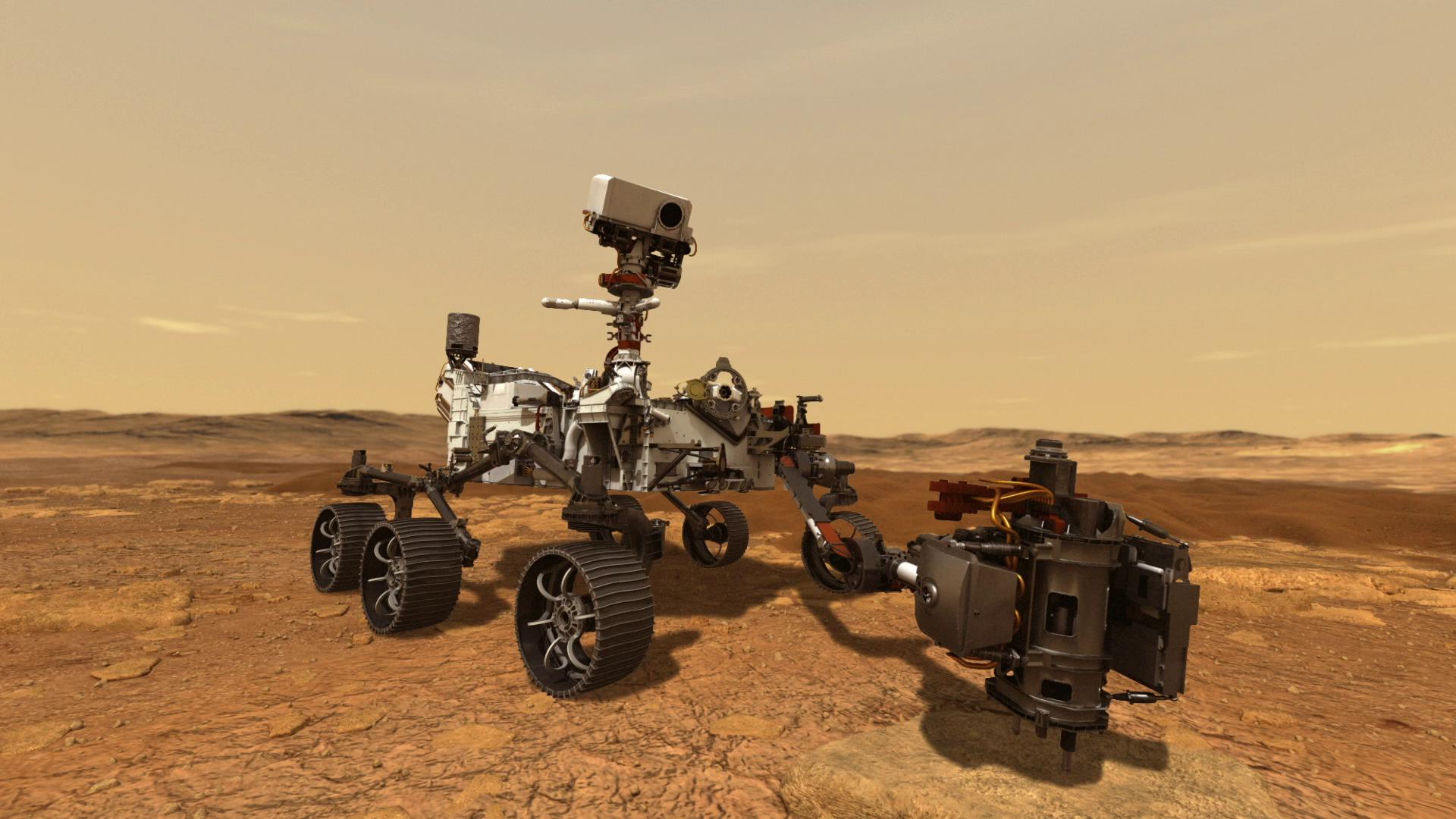
Mars2020 Perseverance Rover (Copyright: NASA)
A very exciting and interesting paper entitled Radar Imager for Mars’ Subsurface Experiment—RIMFAX has recently been published by Hamran et al in Springer's Space Science Reviews journal. The paper describes RIMFAX, part of the payload for NASA’s Mars 2020 Perseverance Rover, which has been designed to image the subsurface structure of Mars, and to provide information regarding subsurface composition.
“Data provided by RIMFAX will aid Perseverance’s mission to explore the ancient habitability of its field area and to select a set of promising geologic samples for analysis, caching, and eventual return to Earth.”
The research team describe the use of gprMax to carry out numerical modelling to assess GPR imaging potential at the landing site. Some of the recent advanced features in gprMax, such as fractal-based roughness for realistic topographic modelling, have been utilised.
The paper is available, open access, at: https://doi.org/10.1007/s11214-020-00740-4
Videos released from online workshop10-Aug-2020
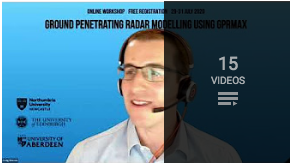
We have released video recordings of sessions from our recent online workshop on 'GPR modelling using gprMax' on our YouTube channel, where you can access a playlist of the event.
The first of its kind on GPR modelling, the workshop proved to be a great success, and we received a lot of positive feedback from the attendees. Here are a few statistics from the event:
- ~330 delegates registered for the event.
- There were ~170 unique viewers per day from ~44 different countries worldwide.
- Most attendees use (or plan to use) gprMax for solving GPR related problems.
- Level of familiarity with gprMax was mixed but with most attendees either only having discovered it for the first time, or having run some basic models.
- 97% of attendees (that voted in the poll) would like to see this workshop become an annual event.
- 99% of attendees (that voted in the poll) would like to see further dedicated workshop/training events on specific aspects or applications of GPR modelling.
- 84% of attendees (that voted in the poll) said they would be willing to pay a small registration fee to attend such events.
3-day online workshop on GPR modelling with gprMax24-Jun-2020
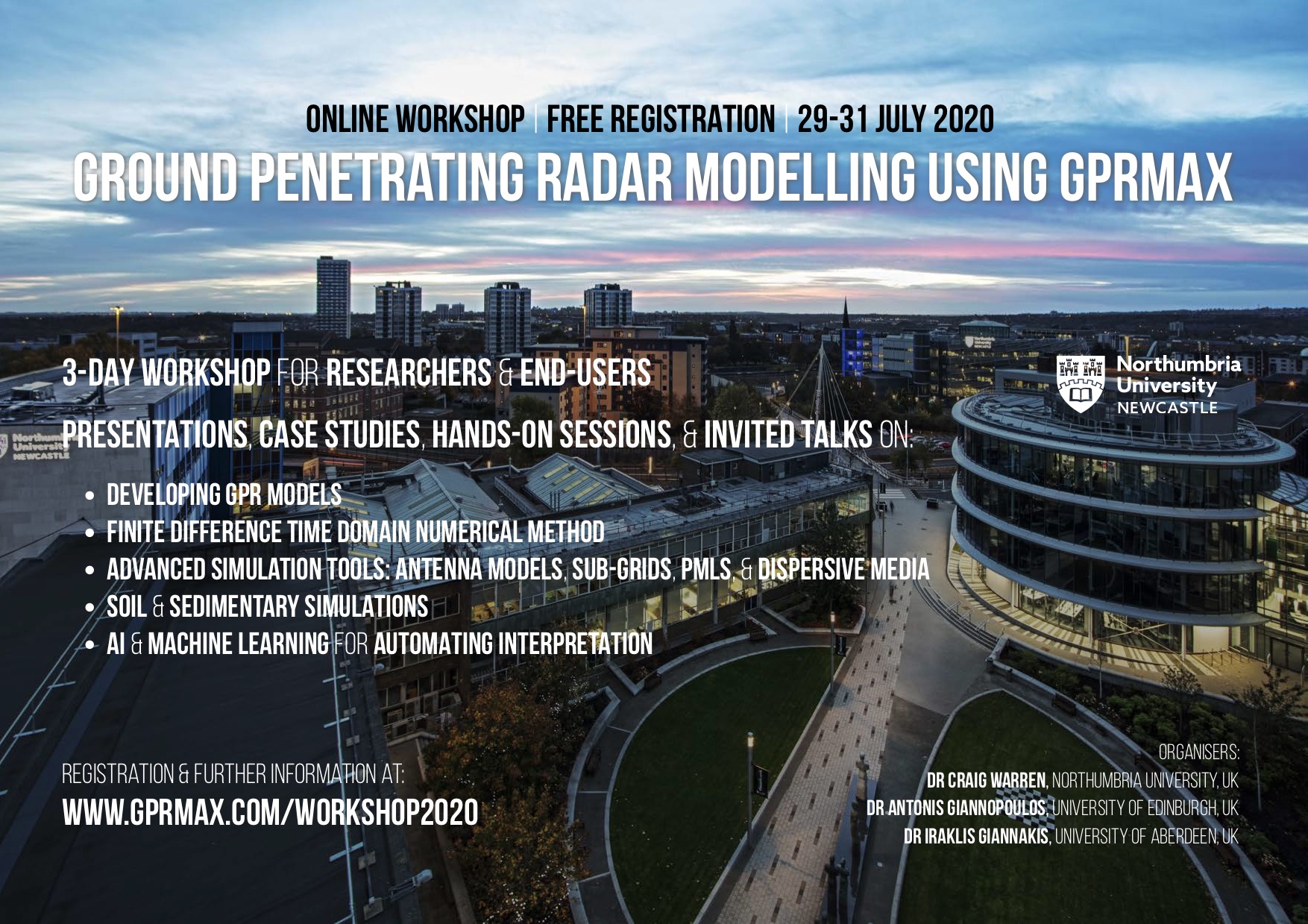
A free 3-day online workshop will take place on 29-31 July 2020.
This workshop replaces the planned face-to-face event that was due to take place 6-7 April 2020 at Northumbria University, Newcastle, UK, and had to be postponed due to the coronavirus pandemic.
The workshop is being organised by Dr Craig Warren (Northumbria University, UK), Dr Antonis Giannopoulos (University of Edinburgh, UK), and Dr Iraklis Giannakis (University of Aberdeen)
Full details and registration information at http://www.gprmax.com/workshop2020.shtml
Paper Highlight - Our paper on GPU version published in Computer Physics Communications23-Nov-2018
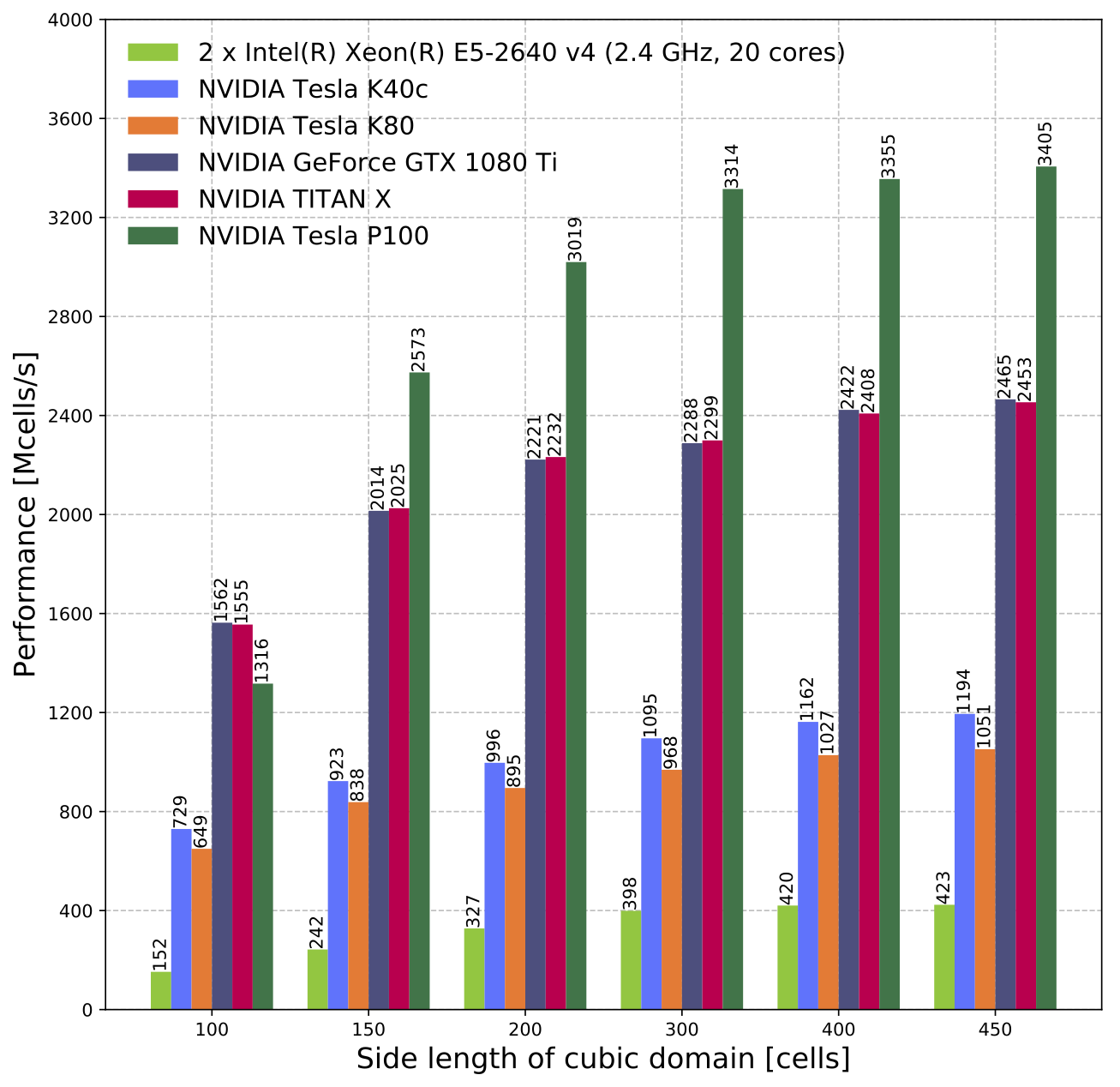
CPU vs. GPU performance (single precision, float32)
We are pleased to announce our paper describing the new GPU performance enhancements to gprMax has been published in the journal of Computer Physics Communications.
We designed optimal kernels for GPU execution using NVIDIA's Compute-Unified Device Architecture (CUDA). We tested our GPU-based solver on a range of Kepler and Pascal NVIDIA GPUs. It achieved performance benefits up to 30 times faster than the parallelised (OpenMP) CPU solver can achieve on a commonly-used desktop CPU (Intel Core i7-4790K), and significantly faster than a server CPU (Intel Xeon E5-2640).
We expect these performance benefits to rapidly advance GPR research in areas such as full-waveform inversion and machine learning
We carried out this work as part of a project with Google Fiber (USA), and had support from NVIDIA (UK).
The paper is open-access and we would appreciate that if you use gprMax and publish your work, you would cite this new paper.
GPR2018 Young Scientist winner uses gprMax23-Jun-2018

Sam wins GPR2018 prize
The Young Scientist Best Paper Award at the 17th International Conference on Ground Penetrating Radar (GPR2018) was won by Sam Stadler from the Leibniz Institute for Applied Geophysics, Hannover, Germany. This is the second time in a row that this prize has been won by a researcher using gprMax, after Markus Loewer won the award at GPR2016.
Sam developed a detailed and realistic antenna model similar to the Geophysical Survey Systems, Inc (GSSI) 400MHz antenna. He has used the model as a key component in simulations to investigate using guided GPR waves along metallic cylinders in boreholes for permittivity sounding. You will be able to read Sam's paper when the conference proceedings are published by the IEEE. Well done Sam!
Version 3.1 - with GPU acceleration - released!19-Jun-2017
We are excited to announce the release of version 3.1. Code-named Big Smoke, it continues our whisky-based naming, and is also a reference to the cities of Edinburgh (Scotland) and San Francisco (USA). Why? Because the development of v.3.1 was funded, through a research project, by Google.
We are making this release available to coincide with the 9th International Workshop on Advanced Ground Penetrating Radar (IWAGPR2017) which we are hosting next week, 28-30 June. We look forward to discussing the release with participants at our pre-conference workshop, and delegates at the conference.
The most significant feature of this release is the ability for simulations to utilise general-purpose computing using graphics processing units (GPGPU). We have used NVIDIA's Compute-Unified Device Architecture (CUDA). Our testing on both consumer and data centre NVIDIA GPU cards has shown dramatic performance increases over our parallelised CPU (OpenMP) implementation.
For example, in the figure shown, a model with 400x400x400 = 64 Mcells could run up to 20 times faster on a NVIDIA TITAN X GPU than on 4 cores of a Intel® Core™ i7-4790K CPU. These types of speed improvement open up a lot of new opportunities and possibilites for FDTD simulations, not just for GPR!
You can read about how to use the GPU functionality and find full documentation in our User Guide. Please report any bugs with the code via the Issues feature on our GitHub page. For help and general advice on using the software visit our Google Group forum.
Highlight - Paper published in Computer Physics Communications27-Sep-2016
We are pleased to announce that our paper describing the new version of gprMax has been published in the journal of Computer Physics Communications. Some of the new advanced features of the software explained in the paper are: dispersive material simulation using multi-pole Debye, Drude or Lorenz expressions; realistic soil modelling; rough surface generation; and the ability to embed complex transducers and targets.
The paper is open-access and we would appreciate that if you use gprMax and publish your work, you would cite this new paper.
Have a look/listen to the audioslides (~5mins) which briefly explain GPR and gprMax and describe the key features of the paper.
GPR Imaging Challenge24-May-2017
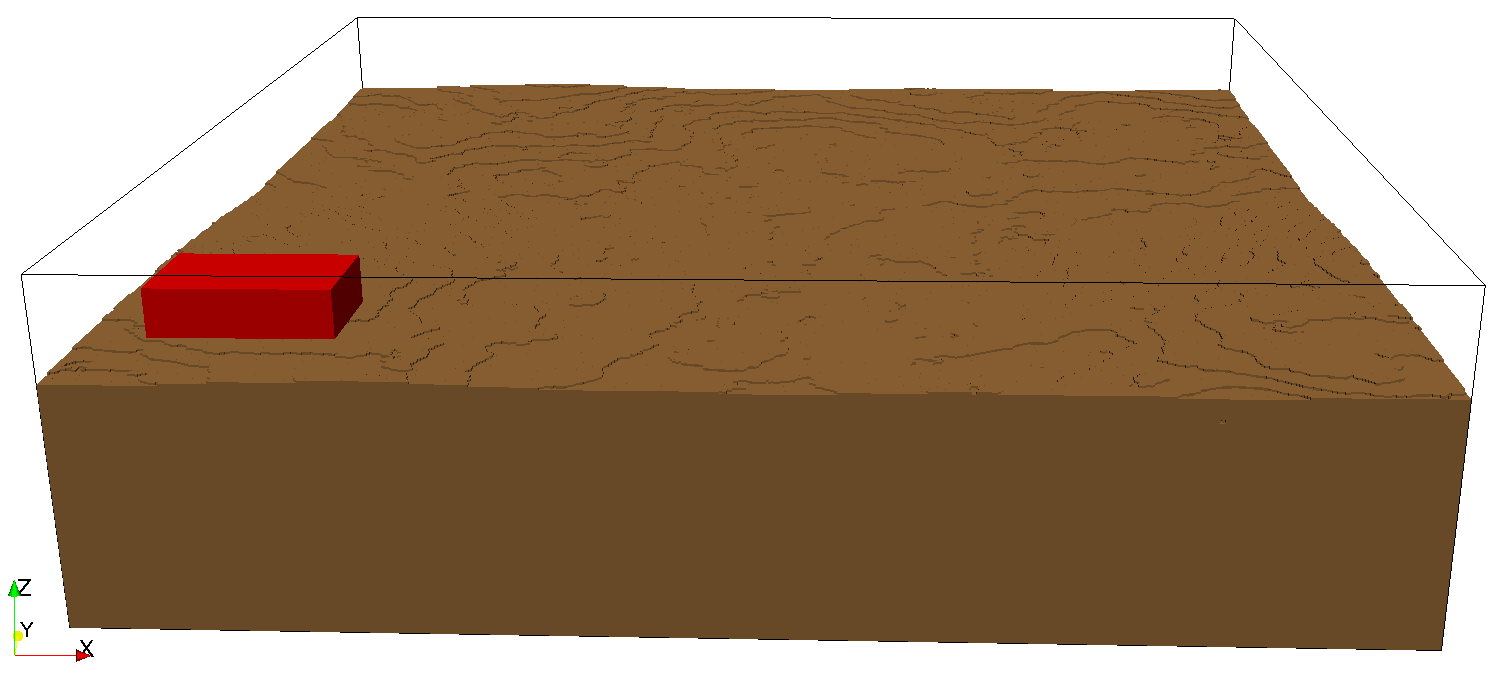
Imaging challenge model outline
The 9th International Workshop on Advanced Ground Penetrating Radar (IWAGPR 2017) is being hosted by the School of Engineering at the University of Edinburgh. We have therefore decided to design what we believe to be a realistic 3D GPR model which we think offers a challenge for testing GPR processing, imaging, and inversion algorithms. Before releasing information on the detailed construction and composition of this model (to be used by the GPR research community) we would like to offer the modelled data as an imaging and interpretation challenge to GPR researchers. We have scheduled a session in the IWAGPR2017 conference programme, in which we hope some results can be presented. The dataset and a full set of instructions can be found at our GitHub repository.
Featured project on spectral soil properties02-Aug-2016
The latest in our series of showcased projects is by Markus Loewer from the Leibniz Institute for Applied Geophysics in Germany. Markus was the GPR2016 Young Scientist winner, and is using the new dispersive material modelling capabilities to create multi-pole Debye models to accurately simulate the frequency-dependent dielectric properties of different soils. Read more about it in the projects section.
Screencasts & videos13-Jul-2016
PEC cylinder in heterogeneous (left) & homogeneous (right) half-spaces (2D)
We have added some screencasts and videos to our YouTube channel. There are screencasts to help new users with installing and updating gprMax. We have also created videos, like the one shown here, that demonstrate how electromagnetic fields propagate in different environments. These are fairly simple 2D models but, nevertheless, are educational and provide some useful insight. We will be adding videos of more complex simulations as well as screencasts of guided example models. You can find a list of all the screencasts & videos in the User Guide.